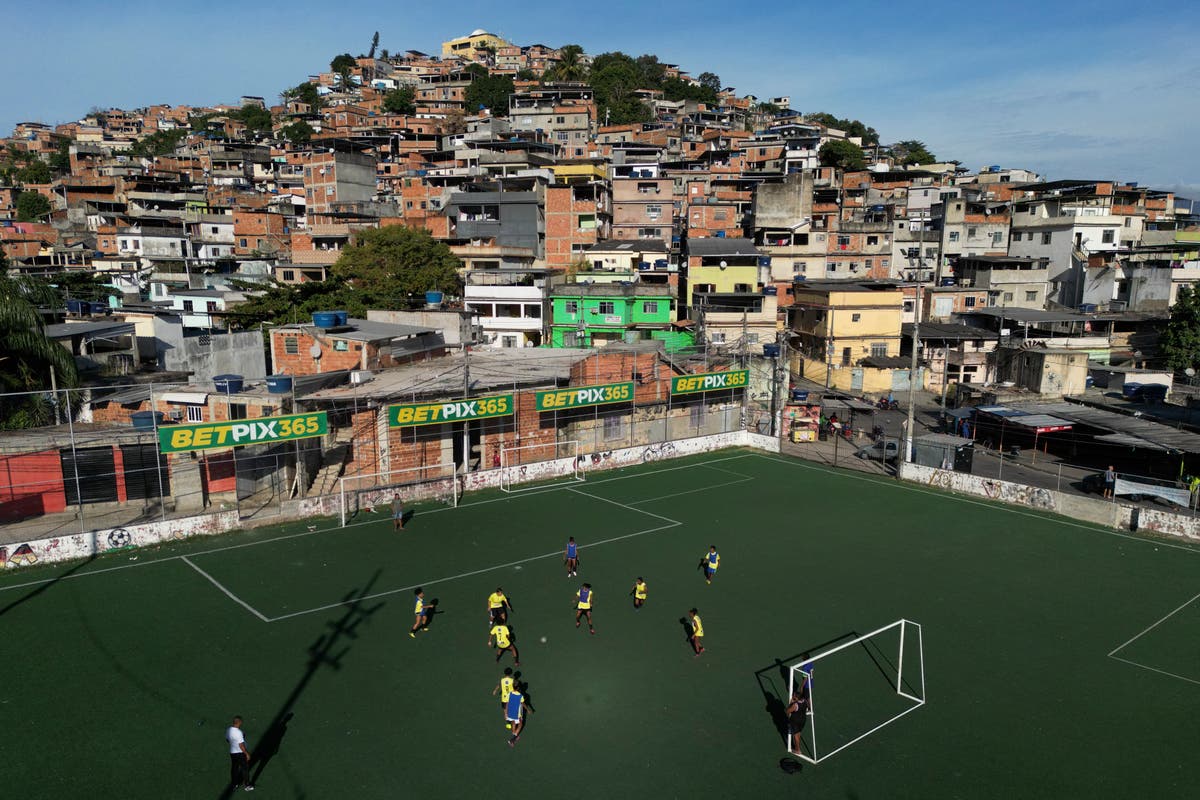
We’ve seen sibling pairs in the Senate, as well as mother-and-son tandems. But three brothers? If the pre-election polls hold until May 12, 2025, neophyte Senator Raffy Tulfo will be welcoming two of his brothers to the Senate. Fellow news broadcasters Erwin and Ben ranked first and second in the September 2024 Pulse Asia senatorial preferences survey.
Four other family members are seeking seats in the House of Representatives. The senator’s wife, ACT-CIS Representative Jocelyn Tulfo, and his son, Quezon City Representative Ralph Tulfo Jr., are seeking reelection.
Senator Tulfo’s sister Wanda Teo is also running as the first nominee of Ang Turismo party-list group, while her son Robert Tulfo Teo is the third nominee. If they all win, there will be seven Tulfos in Congress next year. Must Read [Rear View] With the Tulfos rising, is it sunset for the Dutertes and limbo for Manang Imee? Three Villars served in the Senate over the past two decades.
Next year, a fourth Villar is seeking the same seat. Las Piñas Rep. Camille Villar aims to follow in the footsteps of her father, mother, and brother, who all began their political careers in the House before advancing to the Senate.
The Villars are aiming for five seats next year. (READ: ‘New politics,’ how? Camille seeks to be the 4th Senator Villar ) Seeking higher positions and swapping roles allow political dynasties to stay in power and expand their political influence. It is only two of many tactics that are repeated in varying degrees in provinces, districts, cities, and municipalities.
Marcos-Romualdez dominance The Tulfos and the Villars are getting a lot of attention due to their dominance, or potential dominance, in national politics. The count done by the Philippine Center for Investigative Journalism (PCIJ) shows there are at least two dozens of political dynasties seeking to occupy at least five seats each after the May 2025 elections. Among them are the Marcos and Romualdez clans of Ilocos Norte and Leyte, Singsons of Ilocos Sur, Hataman-Sallimans of Basilan, Ortegas of La Union, Dys of Isabela, Tulfos, Pacquiaos of South Cotabato and Sarangani, and Dutertes of Davao City.
They also include the Villar family of Las Piñas, the Belmontes of Quezon City, Abaloses of Mandaluyong, Revillas and Tolentinos of Cavite, Ejercitos of Laguna and San Juan City, Khos of Masbate, Duranos of Cebu, Dimaporos of Lanao del Norte, Alonto-Adiongs of Lanao del Sur, Ampatuans and Masturas of Maguindanao, and Tans of Sulu. Four decades after the fall of the late dictator Ferdinand E. Marcos, the Marcos family has succeeded in rehabilitating its legacy.
His son and namesake Ferdinand Marcos Jr. leads national politics alongside his cousins in Leyte, who represent the political clan of his mother, former First Lady Imelda Marcos. At least five Marcoses are running for seats in the Senate, House, and Ilocos Norte local government, based on PCIJ’s count.
At least five Romualdezes are also running for various positions in Leyte. Many political dynasties have had a tight grip on their provinces for decades. In Ilocos Sur, Luis “Chavit” Singson, considered a kingmaker in the region, is a fixture in provincial and regional politics.
He is taking another shot at the Senate race after losing his bid back in 2007. By PCIJ’s count, 10 other family members are running for various seats in the party-list race and in local races in Ilocos Sur. Four of them are running against each other.
In La Union, the province is too small for the country’s oldest political dynasty, the Ortega clan, which has exercised an unbroken rule of the province in the last century. At least 11 Ortegas are running next year for only eight positions. They are fighting against each other for the gubernatorial seat, one district seat, and leadership of an adjacent town, the popular San Juan surf town.
These family rivalries will secure the seats for the clan. It’s the same names in Cavite: the Revillas and Tolentinos dominate as the Remullas opt to join the Marcos government. The Khos of Masbate seek to control all district seats.
The Duranos of Cebu are joining the party-list race, too. In Mindanao, the Hataman-Saliman clan of Basilan Island has eight family members running next year. They are fighting against each other in the gubernatorial and mayoral races.
The Pacquiaos of South Cotabato and Sarangani have seven family members running for office. The clans of Dimaporo in Lanao del Norte, Adiong in Lanao del Sur, Ampatuan and Mastura in Maguindanao, and Tan in Sulu are all old names. The list of two dozen political clans is the result of PCIJ’s initial scan of candidates that filed their certificates of candidacy (COCs) in early October, based on news media reports and social media posts of the candidates, news media, and offices of the Commission on Elections (Comelec).
The numbers could be higher if family members running for lower positions, like city and municipal councilors, were reported. The count also does not include barangay officials. (You can help PCIJ complete the list here .
) Flaunted and sold like brands Political dynasties are prohibited under the 1987 Constitution. But Congress’ failure to pass an implementing law has turned political dynasties from “largely thin” to “fat,” said Julio Teehankee, a political science professor who has authored several studies on political clans in the Philippines. “If you exceed four or five [family members in politics], that’s already obese.
Sobrang taba na. It’s not good for the health of democracy,” Teehankee said, commenting on PCIJ’s research. Former Comelec commissioner Luie Guia said good governance advocates like himself should work harder to inform voters about the negative impact of allowing political dynasties to control national and local governance.
He lamented how the filing of COCs from October 1 to 8 seemingly became a parade of political dynasties. Families used to be defensive, said Guia. Now, they are flaunting their dynasties like they are product brands.
ALSO ON RAPPLER INITIAL LIST: Comelec-approved senatorial candidates for 2025 elections LIST: Party-list groups running in the 2025 Philippine elections LIST: Candidates for mayor, vice mayor in Metro Manila for 2025 elections LIST: Celebrities, online personalities running for gov’t positions in the 2025 elections Poverty and underdevelopment Long-term studies have shown links between political dynasties and poverty. “There is a correlation between the high concentration of political families or dynasties and the high percentage of underdevelopment or the low levels of development. These are empirically proven,” said Teehankee.
“There are some [good dynasties], but they have become more of an exception rather than the rule,” he said. Legal Network for Truthful Elections (LENTE) executive director Rona Ann Caritos said areas controlled by political dynasties also have higher risks of corruption and this is “why people don’t get the service and programs they really deserve.” “Checks and balances are integral to our government, which is why the legislative, executive, and judiciary branches are separate.
If families control both the executive and legislative branches, there’s no check and balance anymore. That’s why corruption happens; that’s why bad governance happens,” Caritos said. PCIJ also mapped the political clans according to the poverty incidences in their respective provinces to gain a better understanding of the correlation between dynasties and underdevelopment.
The patterns are worrisome but not surprising. It reveals a picture of uneven development across the country, with growth concentrated mainly in already developed areas — predominantly in Metro Manila and the rest of Luzon — while regions like Mindanao remain neglected. (The red bubbles represent political dynasties based in the National Capital Region.
The yellow, purple, and green bubbles represent those in the rest of Luzon, the Visayas, and Mindanao, respectively. In the chart, poverty incidence increases from left to right.) The PCIJ map shows that poverty incidence is an inadequate metric for political dynasties to use as the sole indicator of their performance.
“It’s a metric, but it’s not the only metric,” said Maria Carmen “Ica” Fernandez, who has studied development patterns in Philippine provinces, particularly in conflict areas. “To some extent, even some elements of the Seal of Good Local Governance can be gamed,” she said. Poverty incidence alone is also not enough to fully measure poverty in localities.
Fernandez said less inequality and more market competition, for example, would be better indicators. “Are they able to provide more public goods, such as increased electrification, better schools, better water systems, more access to healthcare, regardless of voting pattern? Do these dynasties allow small and medium enterprises and businesses to flourish, or are all the assets and sources of income concentrated in the hands of the few?” Fernandez said. Still, certain political dynasties stand out in the PCIJ map.
Questions voters should ask Guia said there has to be a pushback, and there are important questions voters should be asking. “Let us ask as citizens why a family would desire stronger political power,” said Guia. “ Bakit sila nand’yan? Bakit sila lang? Wala na bang iba? At ano ba ‘yung makukuha nila d’yan? (Why are they there? Why only them? Is there no one else? And what do they stand to gain from it?)” The answers will shed light on the motivations behind dynasties in the country, he said.
“If you look at it, why are they spending such a huge amount [during campaigns], and sometimes you can’t even figure out where the funds are coming from? What is really at stake there?” Teehankee said there is also evidence of political dynasties using their political power to serve their business interests. “Because when the lines between private and public interest are blurred, whose interest will prevail? Usually, it’s the self-interest of the dynasties,” he said. These are the deeper questions that need to be answered, said Guia.
“What are the thriving businesses in this area? Is there mining? Is there oil? Especially if the issue is about controlling natural resources.” ‘Predatory Politics’ and ASR This is when “predatory politics” happens, said Teehankee. “Have you not noticed that in areas with many dynasties in our country, they are the ones who own gas stations, fast food chains, and various other businesses?” A substantial portion of government funds is allocated for these regular procurement items because they are essential for delivering basic government services and programs.
Yet many voters feel they are indebted to political families when they avail themselves of these programs and services, said Caritos. It is this Filipino virtue of “ utang na loob (debt of gratitude)” that has always worked to the advantage of political dynasties, who attach their names to government services. Lente regularly monitors the abuse of state resources by government officials during election campaigns.
These commonly take the forms of social welfare programs and the use of government transportation, said Caritos. Even government employees, who should not engage in partisan political activities, are sometimes mobilized to campaign for incumbent officials, she said. “Abuse of state resources plays a big role.
It really entrenches these political families deeper in power. Because they are in power, the government resources and government personnel are at their disposal. If they use it for good — kahit use pa lang — advantage na nila .
How much more kapag abuse ? (Just using government resources for good works to their advantage. How much more when they abuse these?)” Guia said he has resolved not to vote for candidates in the House and Senate who will not commit to pass the anti-dynasty law required by the Constitution. “If no one will commit, then I’d rather not vote,” he said.
– Rappler.com PCIJ’s series on political dynasties is led by PCIJ executive director Carmela Fonbuena. Resident editor TJ Burgonio is co-editor.
The reportorial and research team includes Guinevere Latoza, Aaron John Baluis, Angela Ballerda, Maujeri Ann Miranda, Leanne Louise Isip, Jaime Alfonso Cabanilla, Nyah Genelle De Leon, Luis Lagman, Jorene Louise, Joss Gabriel Oliveros, and John Gabriel Yanzon. PCIJ resident artist Joseph Luigi Almuena produced the illustrations..














